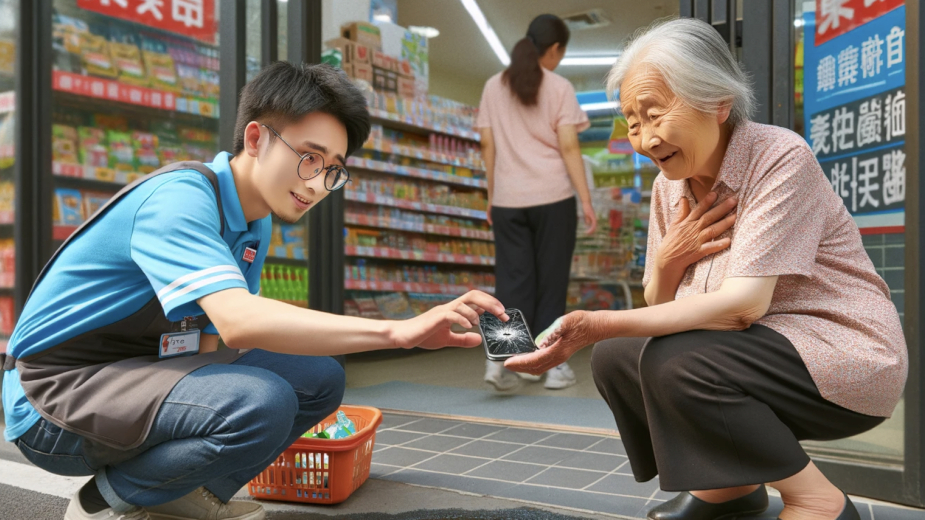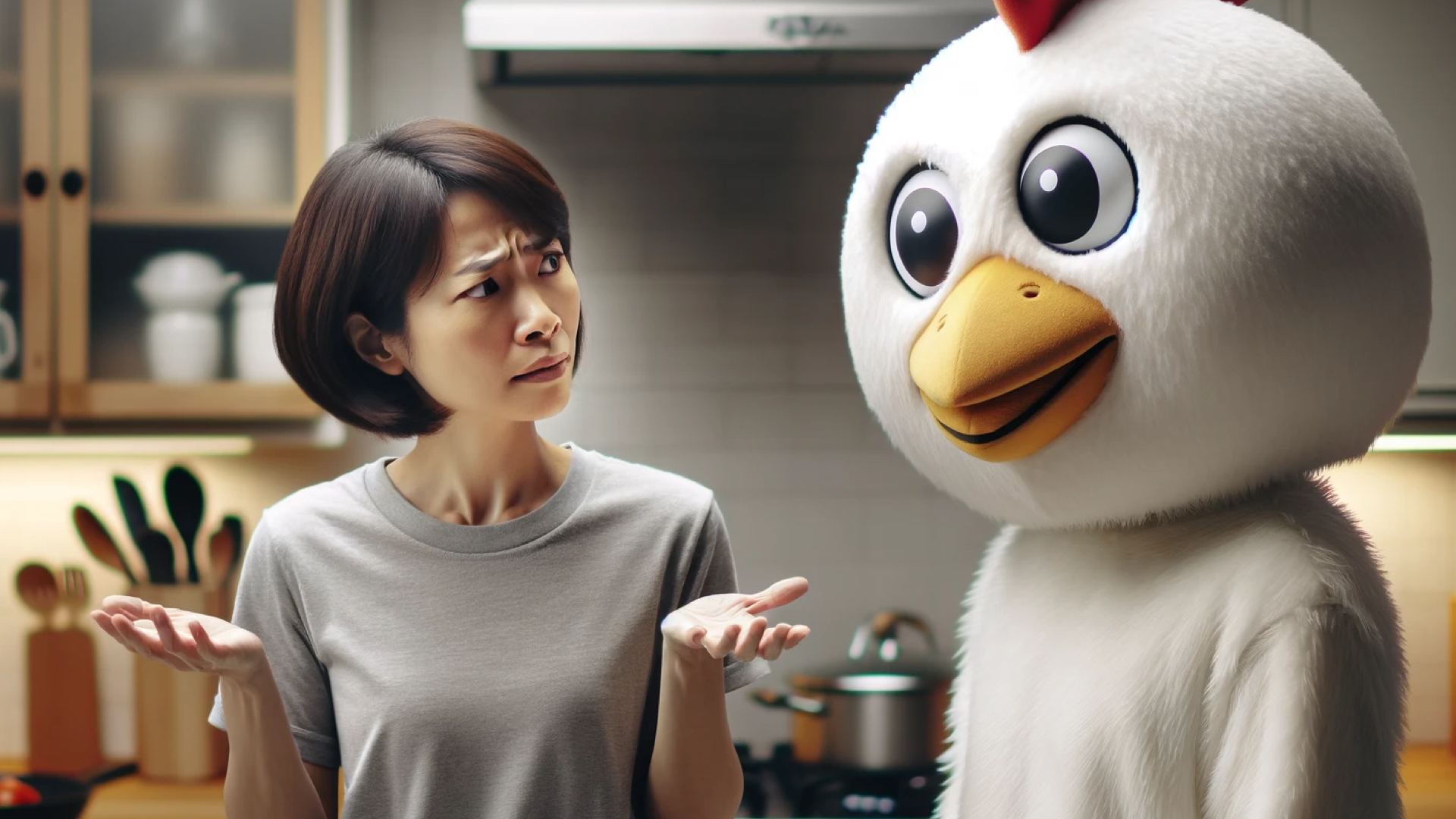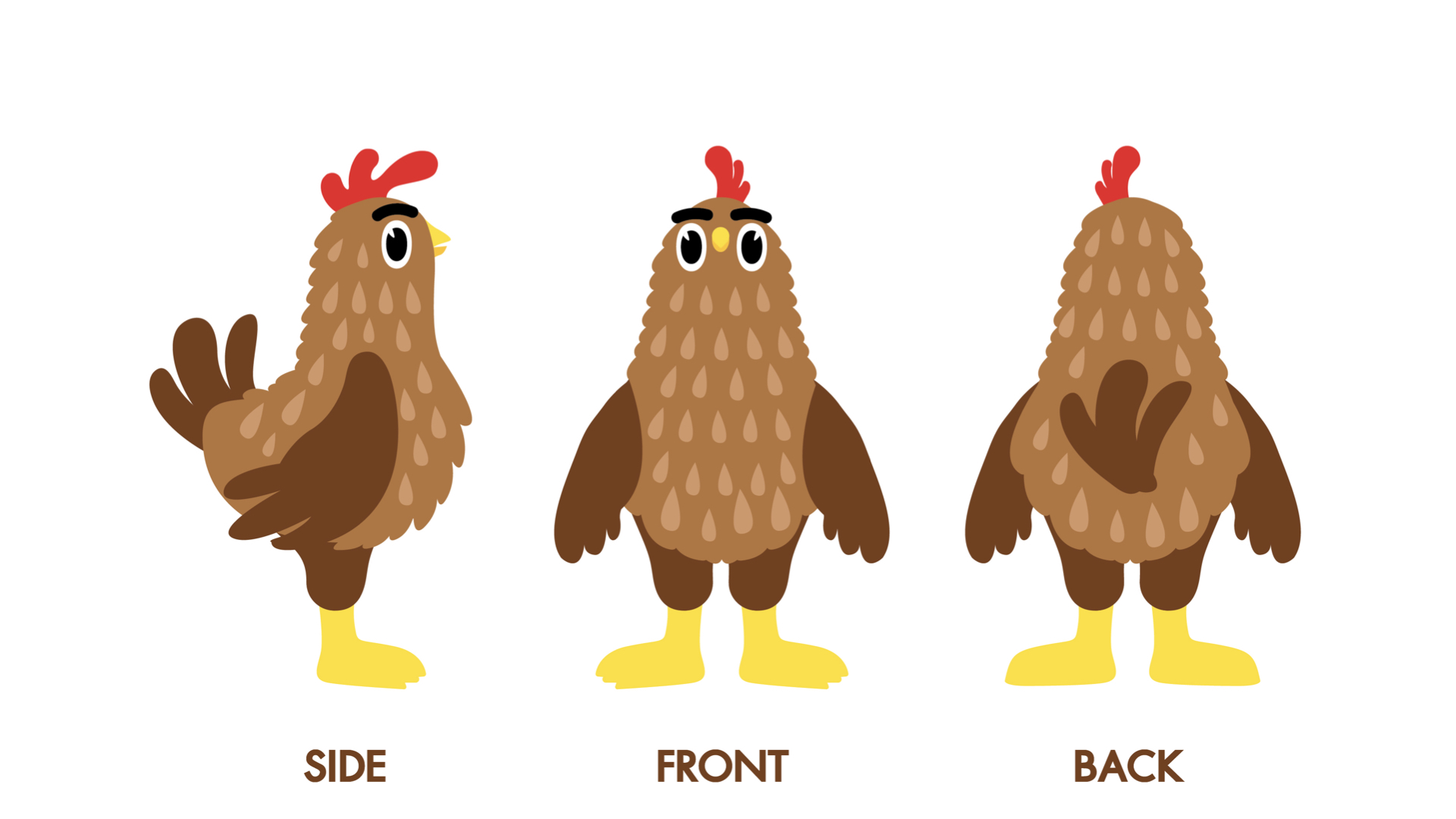
How Is Generative AI Changing Boards, Treatments and Shot Lists?

If you work in the creative industry and didn’t have an attack of existential angst when you saw OpenAI reveal its forthcoming AI video generation tool Sora a couple of weeks ago, you’re more mentally resilient and optimistic than most of the LBB editorial team. You only need to glance at a few of the videos it made with nothing more than text prompts to understand the magnitude of the change that is coming to the industry.
But while Sora’s launch comes Soon™ – once the AI company has taken “important safety steps” to test its bias and potential for misinformation – the creative world is already leaning heavily on other generative AI tools throughout the filmmaking process. Midjourney, Dall-E, ChatGPT, Gemini, Copilot or Firefly are finding myriad uses at brands, agencies and production companies way before shoot day.
Directors’ treatments are a crucial step in the creative workflow, and have only grown in importance in recent decades. They’re something that Nicolas de Sola, visual artist at Stink Films, sinks a lot of his time and expertise into so that the production company’s directors can earn the chance to bring their ideas to life for clients and agencies. “It’s fair to say that a director’s mind works in its own way,” he says, “and the process of generating ideas… At times it's fast, other times chaotic. It’s its own beast. We like to imagine the possibilities, the ‘what ifs’.”
Gen AI can clearly be an aid to that exploration process. Derek Powell, director of creative services at Tool has become familiar with the various ways it helps. “Here at Tool, we’re using AI throughout many steps of the treatment process,” he says. “It’s helpful in summarising notes from the briefing calls, generating an initial structure for the written approach, and creating custom imagery and storyboards for the visual portion.” Just recently, the production company has employed these tools during the pitch process with Under Armour, Starburst, and Coke.
It’s certainly not just production companies that are playing in this space. Agency production departments like Prodigious, the global production platform of the Publicis Groupe, are visualising and developing ideas ahead of filmmaking projects with various kinds of AI collaboration built into its workflows.
Prodigious creative technologist Alesandra Miro Quesada and head of CGI Matt Gifford are more than comfortable with the assistance AI gives their teams. “Generative AI is having a huge impact on the way our creatives approach their thinking in conceptual development” they say. “Treatments are still originated and mastered by our directors (whether that be live action or animation), but gone are the days of scouring the internet for rough references that ‘resemble’ our idea.”
It’s that arduous research slog that production experts across the board are grateful for AI’s help with, especially when working with the idiosyncrasies of creative people’s brains. “When it comes to the writing, there’s no substitute for a director’s ideas. But where AI can be useful is in organising and developing those ideas further,” says Derek. “Up front, it’s helpful in creating sections or a template to use as a jumping-off point.” There’s no use in trusting ChatGPT or similar to write a director’s treatment in full. But once the real human’s ideas have slotted into the framework it helped outline, it can help take things in various directions, for example, “helping to dial in a specific tone or style.”
Beyond writing, visual assistance from tools like Midjourney can be invaluable for the often time-pressured process of treatment writing. “There is often the case that traditional imagery research doesn’t match the speed of thought [of directors],” says Nicolas at Stink. “With generative AI we are now able to bring an idea or visual to life in relatively no time.”
Communicating More Creatively
Dissara Udomdej, CEO at Yell Bangkok, has spent a year working with clients and advertising practitioners using AI-Deate – a platform he designed to help with tasks like pre-visualisation and storyboarding. In that time he’s had lots of good feedback from people who make ads, from creative teams to producers and directors about using generative AI in real working processes. “I want to share what we've learned from 41 countries that have used AI-Deate from the start to the end of making their ads,” he says. And speed, he agrees, is one of the most important benefits of this way of working.
“Now, we use AI a lot to make storyboards,” he says. “This is really helpful because often clients care more about meeting deadlines than having the most creative idea, especially in Asia. So, storyboard AI saves agencies and production teams a lot of time by helping them work together more smoothly.”
The international language of visual aids can add a layer of nuance to creative conversations that cross borders. “Storyboard AI can save time by helping everyone understand each other's ideas better, even if they're from the same company,” he says. “Imagine a commercial shot in two different locations – half in Thailand and half in China. We need to have extensive discussions and make numerous changes to ensure both sides agree on the storyboard and shot lists.” Tools like AI-Deate thrive in this sort of situation.


Above: Two locations, in Thailand and China respectively, visualised in AI-Deate.
Alesandra and Matt at Prodigious have seen creative communication flourish as a result. “We’re now able to replace endless research with art directed mood board visuals created by our prompt engineers to start a more meaningful conversation with our clients,” they say. It’s not hard to see the efficiency that this new process can deliver.
Visualising Totally Original Thoughts
As well as speed, generative AI visualises as-yet-unseen ideas like nothing else the industry has seen. While Derek at Tool has seen the power of writing tools shine through, when it comes to getting visuals just right, it’s become indispensable. “Generative AI has been great for visuals,” he says. “We’ve all spent hours looking for that one perfect image. It has the right lighting, but not enough people. Or it’s shot at the right angle, but the wrong time of day. Or maybe it doesn’t exist at all. Now you can create that one elusive shot almost instantly. It might take some tweaking to get it right – we’ve all seen the infamous AI-generated weird hands and proportions – but the technology has come a long way in a very short time…and it continues to improve practically daily.”
Nicolas goes back to AI’s ability to make tangible the sometimes out-there ideas of truly creative visionaries. Trying to provide a visual representation of the idea that’s never been done before is now in some way achievable. Sometimes even the seemingly boundless internet, “simply doesn’t have that perfect visual one can so clearly see in their head. And that’s where generative AI really shines.” he says.
“I found it so useful for treatment writing – it’s great having the ability to curate images and show what a scene could look like just as you visualise it, without having to rely on the vast sea of references that are often repeated in other people’s pitches.”
Working with Stink Films on Douglas Bernardt’s Megan Thee Stallion music video for ‘Cobra’, it came in handy. “During the pitch, we generated dozens of original visuals based on her brief, which was initially quite conceptual and nebulous. Through prompts we curated the art direction, the set size and shape, the lighting…”
“Megan and her team fell in love with some of these references so much that they were carried in key creative decisions through to the actual production design. It was so exciting to see a full on snake-scale room being built in real life, which we had ideated through an initial AI image. I don’t know how long it would’ve taken me to design that organically. I don’t know if I would’ve been able to make it that spot on. That, to me, is the most interesting aspect of this,” says Nicolas. “Having your very own reference image that you know nobody else has seen before. “
And when the perfect reference nearly exists, but isn’t quite there, there are AI tools that can get it to 100% now. “The AI tools in Photoshop have also made it ridiculously easy to remove text, change colours, and crop out unwanted details,” says Derek. “What once took hours can now be accomplished in a few seconds.”
While the public can’t get their hands on anything like the terrifying Sora yet, adding movement quickly and cheaply to create storyboards and previsualisation has been democratised. Nicolas, has been experimenting with ways to apply AI-generated animations in real-time. “This means combining workflows like 3D renderings or basic filmed videos and translating them visually into different looks,” he says. “Imagine turning an iPhone video over your desk with simple props into an epic drone shot or some intricate transition. Real-time image generation tools to illustrate ideas.”
Room for Improvement
Disaara, who’s seen these tools used more than most in the ad industry, sees where they still fall short. “There's a downside,” he says. “Sometimes, having everything so clear from the start doesn't leave space for new ideas to grow. Some creative people and directors find this limiting. They say it makes it hard to change the story or add new ideas because clients want to stick to the original plan like it's a maths problem. This is a big challenge we've seen with using AI-Deate.”
Come shoot day, he’s seen the problems that gen AI’s radical creative communication generates, compared to the good old days where trusting an experienced creative person was enough. “Even though we have storyboard AI, many people still like to write down their shot lists by hand. Some directors say if they can clearly picture the shot in their mind, they don't need AI images; they just write it down. AI is great for helping sell ideas, but on the day of the shoot, it's not everything. Making ads is half about following a plan and half about art. Directors need freedom to add their own style. If not, why not just use stock videos for ads?” Perish the thought.


Above: Exploring warm and friendly development of characters. Generative AI versus the director's sketch for an egg commercial in Thai and China.
And let’s not get carried away. Treatments and basic shot lists are one thing. But full-on previsualisation of extensive projects is still beyond most gen AI tools. “Consistency is a big challenge with AI, especially on the visual side,” explains Derek. “For example, when you’re creating storyboards with a hero character, the look of that character can vary widely from one rendering to the next – a person will look conservative in one frame, and seductive in the next. Not ideal when you’re pitching on laundry detergent!”
Emerging Tools and Shifting Skill Sets
Yet innovations in the production space are working on eliminating gen AI’s shortcomings already. “The Publicis Production team have been directing their RnD time to train models which understand consistent characters,” say Alesandra and Matt. “The power of combining this custom-trained data set with unique modules such as Control Net and Open Pose presents powerful future opportunities to enhance the storyboarding process.”
It seems clear that upskilling will be a central factor in deciding which companies come out of this period of technological disruption on top. This technology is new to everyone, so those who learn how to apply it to creative production tasks will be hot property in the coming months and years. Nicolas is working on this himself. “There’s all these tricks to refine and curate the image, adapting it until you find the perfect fit,” he enthuses. “Prompt-writing becomes an art on its own. The description weights, masking, negative prompts, etc. To also apply sparks of motion onto the images.”
“And the pace that it's evolving at means every month there’s something new you can do,” he says. “For example, with the right prompt writing techniques you are able to fixate on specific characters, motifs, and have them repeat over different settings or actions. Create a whole collection of storyboard images with visual continuity.”
“It allows us to connect new concepts,” he adds, “and marry different thoughts together so quickly that the creative process is enhanced. These tools let us visually explore the world and ideas from the get go, and unlock new solutions.”
Janssen Powers, a director who’s represented by Farm League, is equally excited about the creativity that generative AI is helping him to reach. “Growing up, I played and wrote music. It was my first love, long before I began making films,” he says. “I’d often write with a guitar or piano. It was a lot of experimenting – throwing things at the wall until I stumbled on a chord progression or melody that resonated. There are definitely musicians who can write entire songs in their heads, but I always found it essential to work things out as I wrote. I’d record something, listen back, make changes, then listen again… over and over until whatever I was making felt like a reflection of how I felt.
“I’ve recently began using generative AI to create a similar workflow while writing scripts / treatments. A few AI tools have enabled me to start ‘sounding out’ an idea as I write. Using Midjourney, I can see how one shot might feel next to another. Using AI voice generators, I can hear how a VO might sound over music. I can throw everything onto a timeline and ‘write’ in an NLE [non-linear editing program], versus being confined to a Word document.
“I’ve never felt very comfortable staring at a blank page, but I like to think I’m a good listener. Generative AI allows me to write, listen, tweak, and then listen again, just like writing music. It’s a process of collaborating with the thing I’m creating – getting out of the way, celebrating happy accidents, and making space for an idea to take on a life of its own.”
A Creative Assistant, But Not the Whole Team (Yet)
For Derek at Tool, the biggest takeaway is that AI can be a powerful collaborative tool – provided you start by bringing good ideas to the table first (“just like any successful collaboration,” as he points out).
“That’s true of both text and imagery,” he says. “Yes, at its baseline it can write an entire treatment or create decent visuals, but the real power lies in treating it like a sharp tool rather than a blunt object. The more specific you are with your prompts, the more successful the output will be.”
With AI being such a fantastic tool to get key visual concepts off the ground, Prodigious’ teams know when and where to bring it into the process. “We use AI as a guiding force to drive a more meaningful creative discussion, but we are never beholden to it as a final concept,” say Alesandra and Matt. “It is ideal in early, iterative phases to suggest the mood or ‘look and feel’ but still gives creatives, directors, and artists the power to build on these base concepts to create unique and meaningful work for the future.”
Is AI a help or a hurt for ads? This is the question that Dissara from Yell Bangkok / AI-Deate has been testing himself with lately. “I think AI is now a big part of making ads,” he says. “But, to make sure AI helps and doesn't hurt us, we need to remember the basics: your own style, experience, and how you talk about your ideas. AI can help make things faster by reducing back-and-forth with clients, but in the end, it's the trust and respect you earn from everyone involved that matters most, something AI can't give you.”













